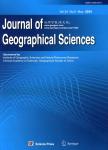Post-earthquake economic resilience and recovery efficiency in the border areas of the Tibetan Plateau: A case study of areas affected by the Wenchuan Ms 8.0 Earthquake in Sichuan, China in 2008
青藏高原边缘区地震灾后的经济韧性及恢复效率——以汶川Ms 8.0地震极重灾区为例作者机构:Key Laboratory of Regional Sustainable Development ModelingInstitute of Geographic Sciences and Natural Resources ResearchCASBeijing 100101China Institute of Science and DevelopmentCASBeijing 100190China
出 版 物:《Journal of Geographical Sciences》 (地理学报(英文版))
年 卷 期:2020年第30卷第8期
页 面:1363-1381页
核心收录:
学科分类:02[经济学] 0202[经济学-应用经济学] 070801[理学-固体地球物理学] 07[理学] 020202[经济学-区域经济学] 0708[理学-地球物理学]
基 金:Second Tibetan Plateau Scientific Expedition and Research Program(STEP),No.2019QZKK0406 National Natural Science Foundation of China,No.41807510,No.41501139
主 题:economic resilience recovery efficiency Malmquist productivity index post-disaster reconstruction area Wenchuan Earthquake border areas of the Tibetan Plateau
摘 要:The border areas of the Tibetan Plateau and the neighboring mountainous areas have a high incidence of earthquakes with a magnitude greater than Ms 5.0, as well as having a dense distribution of geological disasters such as collapses, landslides, and debris flows. Revealing the post-disaster economic development and recovery process is very important for enhancing disaster prevention and response capacity in order to formulate control policies and recovery methods for post-disaster economic reconstruction based on economic resilience. Using long-term socioeconomic data and the autoregressive integrated moving average (ARIMA) model, this paper calculated the economic resilience index of the areas most severely affected by the Wenchuan Earthquake of 2008 and adopted the improved variable returns to scale (VRS) date envelopment analysis (DEA) model and the Malmquist productivity index to analyze the efficiency and effect of annual post-disaster recovery. The results show that: (1) the economic resilience index of the areas most severely affected by the Wenchuan Earthquake was 0.877. The earthquake resulted in a short-term economic recession in the affected areas, but the economy returned to pre-quake levels within two years. In addition, the industrial economy was less resilient than agriculture and the service industry. (2) The comprehensive economic recovery efficiency of the disaster-stricken area in the year following the disaster was 0.603. The comprehensive efficiency, the pure technical efficiency, and the scale efficiency of the plain and hilly areas were significantly greater than those of the plateau and mountain areas. (3) The annual fluctuation in total factor productivity (TFP) following the disaster was considerable, and the economic recovery efficiency decreased significantly, resulting in a short-term economic recession. The TFP index returned to steady state following decreases of 33.7% and 15.2%, respectively, in the two years following the



